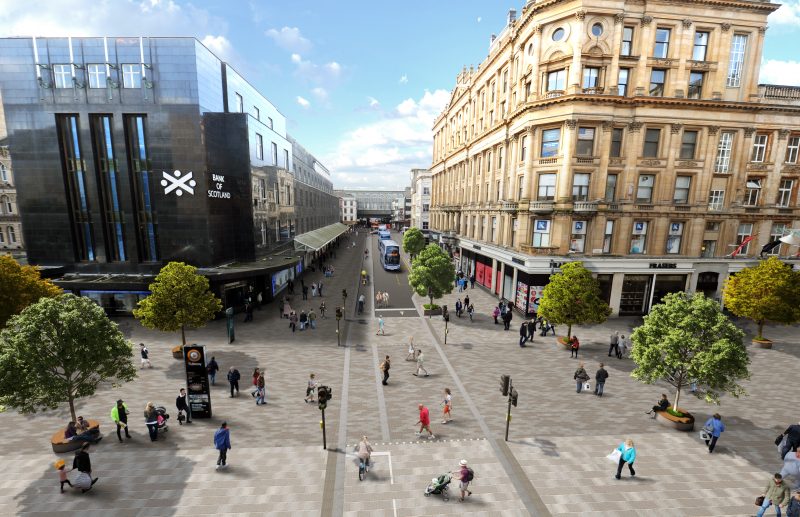This project, for Queens Cross Housing Association, will transform Woodside into a climate-adapted neighbourhood, creating an attractive, multi-functional green infrastructure network with a strong sense of place, in which cycle routes, diverse habitats, sustainable rainwater drainage, vibrant doorstep play and edible landscapes provide a rich environment within which residents and nature can flourish.
An initial options appraisal was undertaken in 2018 by Collective Architecture. In 2020 we were appointed alongside Raeburn Farquhar Bowen (RFB) to develop the concept and detailed design to construction on site. We are assisting RFB in engaging with the local community to guide design decisions and ensure needs are identified and met – the ambition is to have local residents involved in the planning and future management of Woodside’s landscape, generating activities, personalisation and a sense of ownership and control that endures.
The key aims of the project are: to enhance street environments in the Woodside area with hard and soft landscaping solutions; create new dedicated cycle tracks; enable connectivity for people walking or cycling through Woodside; transform the Woodside area from a post-industrial corridor between the City Centre and the north of the city, into a desirable, high quality, vibrant and sustainable local community; provide improved play areas for children of various ages; improve parking areas; provide safe routes for children going to schools; and coordination of works to align with GCC Connecting Woodside project.
The project will be an exemplar for Green Infrastructure within a challenging urban setting, providing an attractive, biodiverse and multi-functional environment as the setting for social housing. The SuDS scheme will be a retrofit design. It will discharge into the existing surface water or combined sewer system. It will involve removal of areas of conventionally drained hard surfacing and the introduction of new surfacing and SuDS drainage elements, designed to provide attenuation, treatment, amenity and biodiversity. The suite of SUDS elements that will be used include: Filter strips, swales, raingardens (bioretention gardens), filter drains, permeable block paving, structural tree pits, and ponds. This will result in a reduced area of hard paved surface compared to the current situation and will further limit flow into the existing surface water sewers. Linking to the aim of the Metropolitan Glasgow Strategic Drainage Partnership to transform how the city region thinks about and manages rainfall to end uncontrolled flooding and improve water quality




